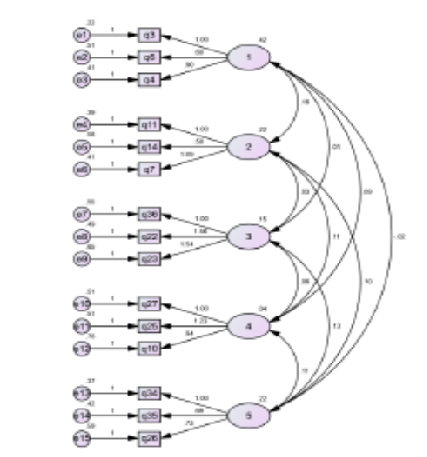


Indian Journal of Science and Technology
DOI: 10.17485/IJST/v15i46.2072
Year: 2022, Volume: 15, Issue: 46, Pages: 2589-2593
Original Article
Tejus Sangameshwara1, P Nagesh1*, Sindu Bharath1,2
1Professor, JSS Centre for Management Studies, Mysore, 570 006, Karnataka, India
2Professor, JSS Science and Technology University, Mysore, 570 006, Karnataka, India
*Corresponding Author
Email: [email protected]
Received Date:21 October 2022, Accepted Date:04 November 2022, Published Date:15 December 2022
Objective: The purpose of this study is to analyse Critical Risk Features via Digital Buying and to quantify the Risk Factor Score (RFS) during COVID 19 Pandemic. Methods: Theory of Planned Behaviour (TPB), Perceived Risk Theory (PRT) and Theory of Acceptance Model (TAM) were considered as a base models for selection the of variables. The survey instrument used in the present study was designed and validated using Exploratory Factor Analysis (EFA) and Confirmatory Factor Analysis (CFA). Three hundred and twenty-two sample responses from Mysore city, Karnataka, India, were obtained through e-mail survey from digital buyers during May 2021–July 2021. The EFA, CFA and Linear regression models were adopted for quantitative assessment of risk features associated with digital buying. Findings: The critical risk features associated with digital buying were identified as; Contractual Risk (CR), Financial Risk (FR), Psychological Risk (PR), Perceived Quality Risk (PQR) and Social Risk (SR). The Risk Factor Score (RFS) for male and female digital buyers were noted as 3.7056 and 3.663 respectively. Thus, risk taking via digital buying by male is higher comparatively. The RFS for the group 31-45 years is 3.697, lesser than age group 15-30 (3.699), while the age group 46-60 RFS is noted as 3.827 which is higher comparatively. Novelty: The attempts were made to identify the risks features associated with digital buying during the pandemic. The present study outcome helps digital shopkeepers to respond positively to the needs of digital buyers during pandemic.
Keywords: Digital consumers; Digital Buyers; Risk factors; Consumer behaviour
© 2022 Sangameshwara et al. This is an open-access article distributed under the terms of the Creative Commons Attribution License, which permits unrestricted use, distribution, and reproduction in any medium, provided the original author and source are credited. Published By Indian Society for Education and Environment (iSee)
Subscribe now for latest articles and news.